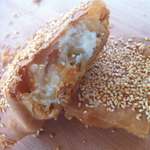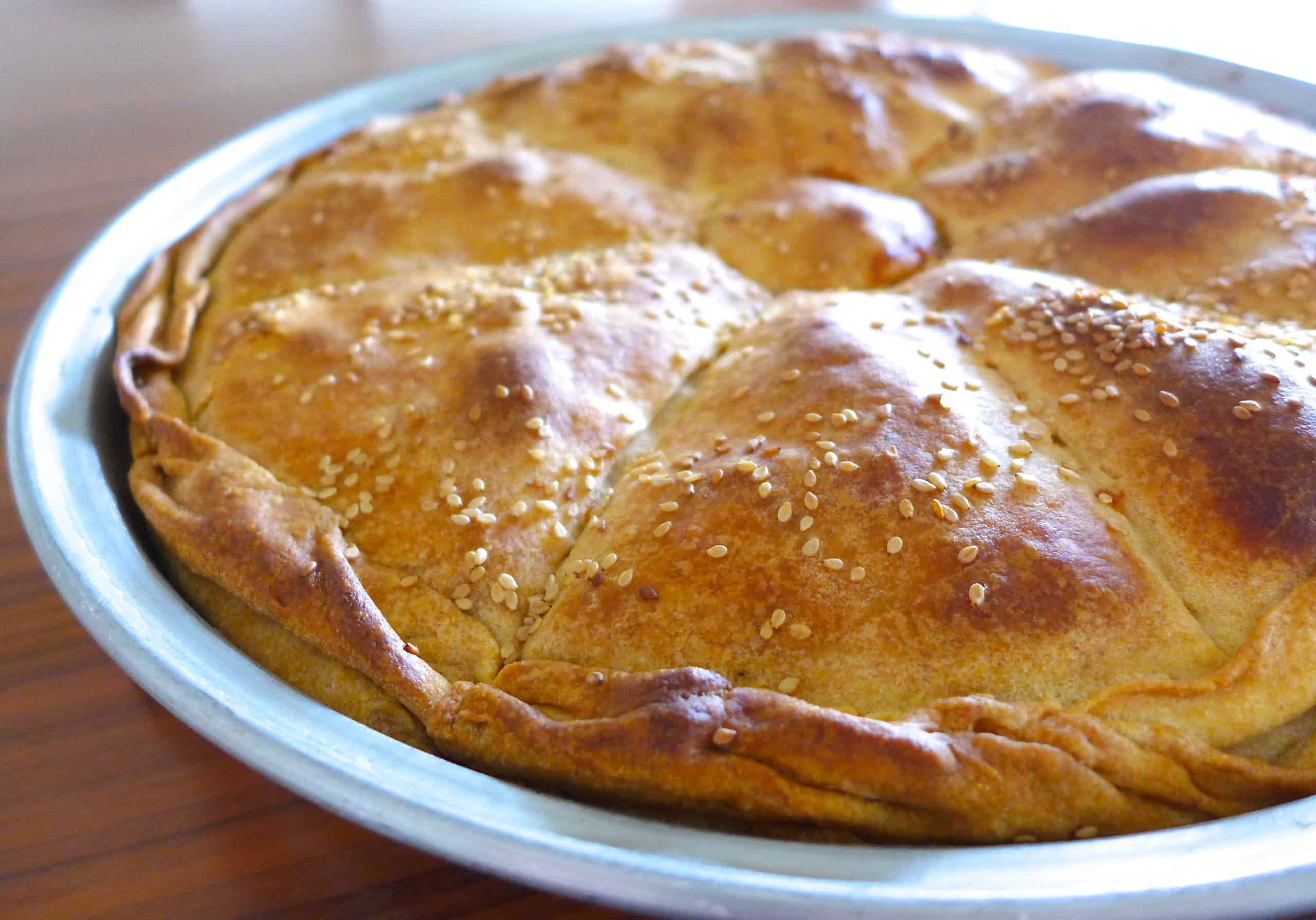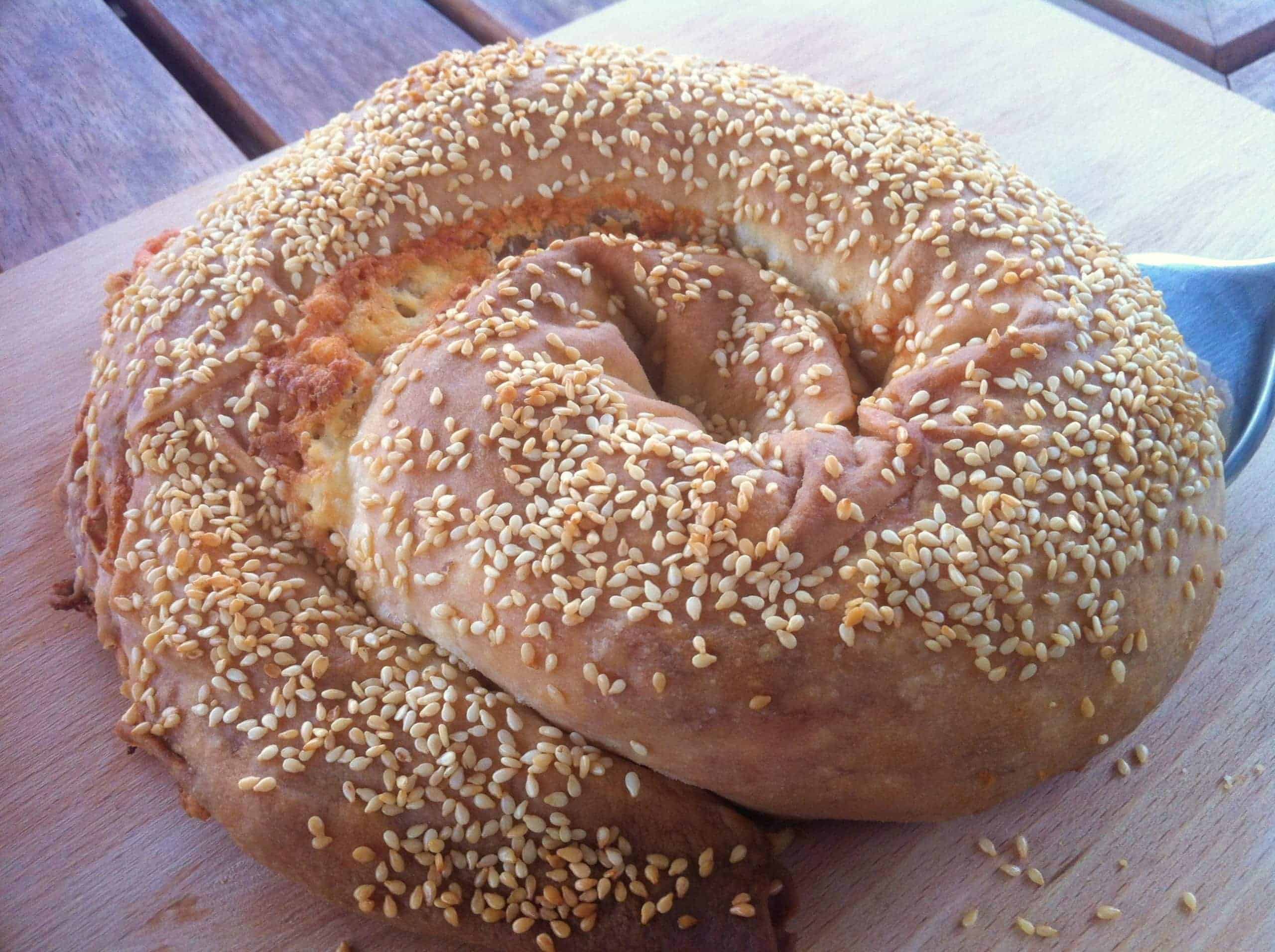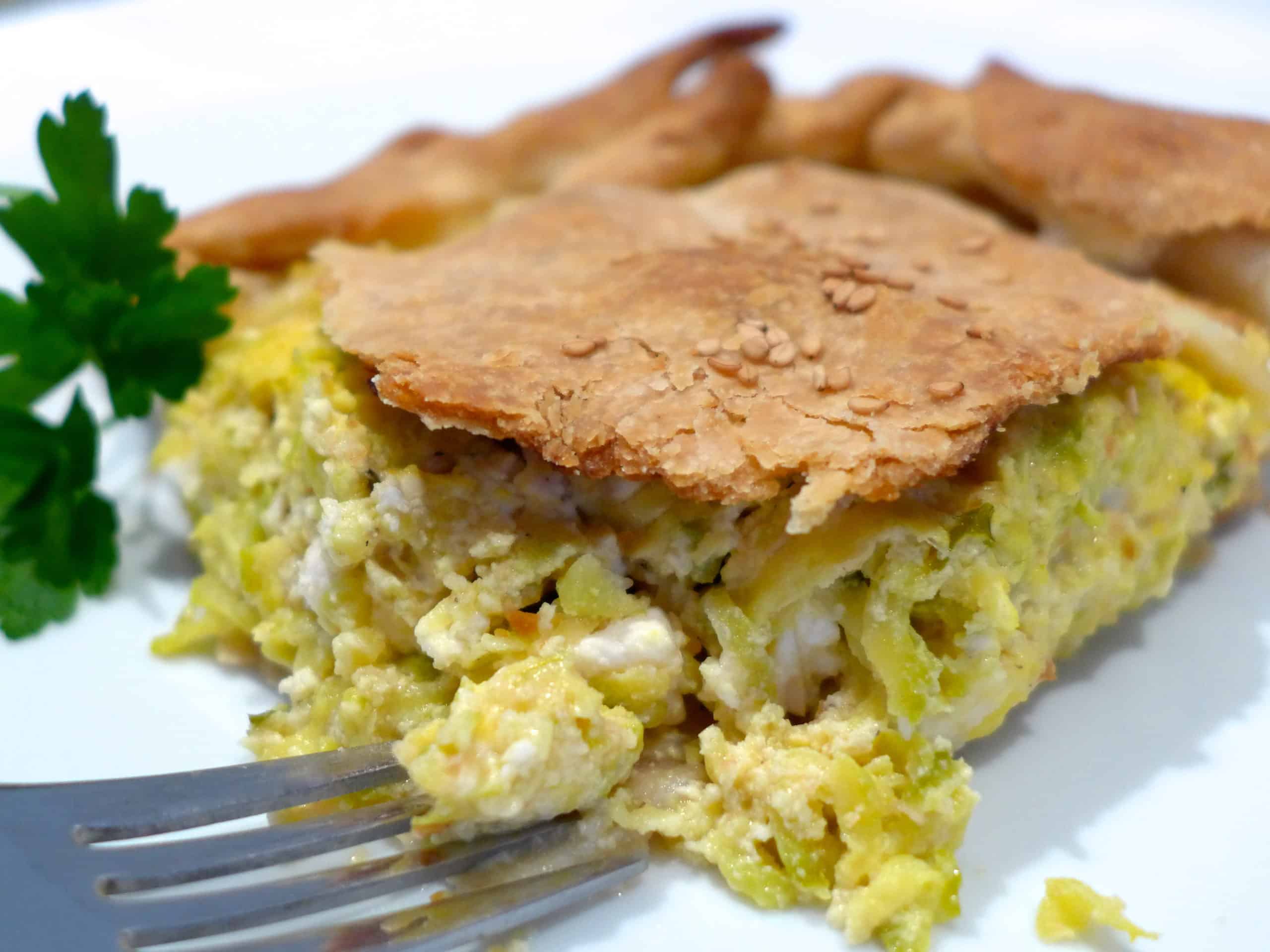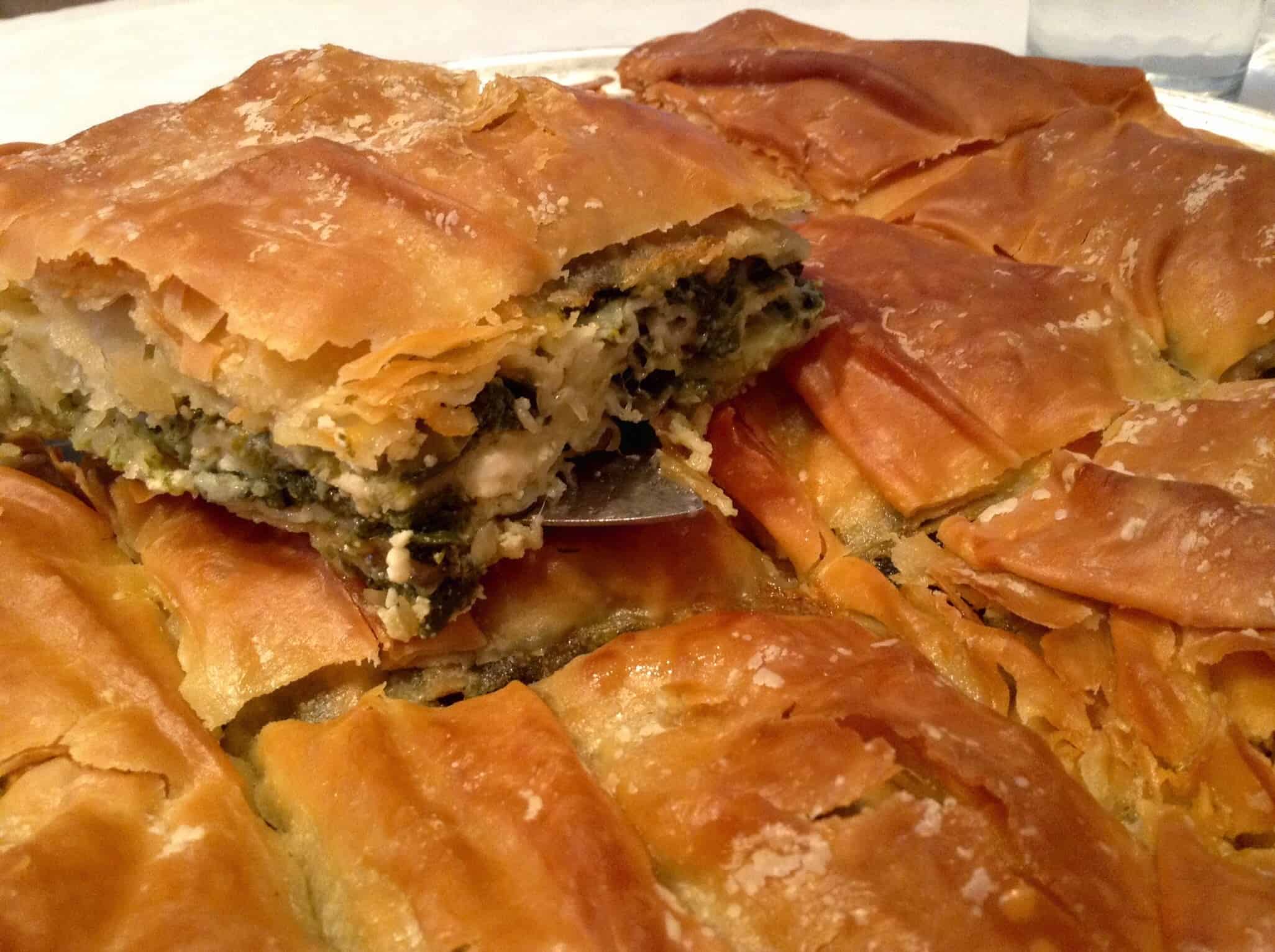Description
There is nothing better than a homemade pie, made with homemade phyllo! Phyllo dough or filo pastry, which means leaf or sheet in Greek, refers to the pastry that is wrapped around savoury and sweet pies and comes in many regional variations!
Ingredients
Scale
- 300g strong bread flour (10.5 ounces)
- 5 tbsps olive oil
- 1 tbsp red wine vinegar
- 1 tsp salt
- 130–150g lukewarm water (1/2– 3/4 of a cup)
Instructions
- In a large mixing bowl add the flour and salt, make a well in the centre and pour in the vinegar and the olive oil. Using a dough hook mix to combine the ingredients for 10-15 seconds. (Tip: The vinegar helps the dough to become crispy.)
- Depending on the kind of flour, the weather, the humidity and various factors, the dough may need a little bit more or less water than this recipe calls for. The secret to make the perfect homemade phyllo is the amount of water you will use; a few more drops may have a huge impact.
- Start by adding 130g of water at first (1/2 a cup) and mix, until the flour absorbs the water; after mixing for a while, the dough should become an elastic ball. The perfect dough should be soft, malleable and smooth. If the dough is still crumbled, then you need to add a little bit more water. Add a few drops of water and mix for a while; check out the consistency of your dough and add a few more drops of water, if needed. In case you added more water than needed, the dough will become sticky. Don’t worry, you can fix that by adding some more flour (add 1/2 tsp at first, mix and check again).
- When you are happy with the consistency of your dough, cut the dough in balls (slightly larger then a golf ball, approx. 80gr each, depending on size of the tray), coat lightly with olive oil, wrap with some plastic wrap and let the dough rest for 60 minutes, or longer. This is essential, so that the dough softens and you can roll it easily.
- Place one ball of dough on a floured surface coat your rolling pin with some flour. Make a circle of dough with your hands. Now you are ready do roll! Ensure that your dough has plenty of flour to prevent it from sticking to the working surface or the rolling pin.
- Use a rolling pin to roll out the dough, until it becomes a very thin round sheet; the thinner, the better. How you do that? It’s not that difficult, if have the right technique. At first, roll out a few times, turning the dough every once in a while, to keep the circle even and the dough from sticking to the surface. Gently roll the edge of the dough over the rolling pin and roll the dough around the pin. Place your hands in the center of the rolling pin and as you roll, move them out to the sides so that both the rolling pin and your hands are working to spread and thin the dough. Unroll, turn a half turn and repeat. Continue rolling making the dough thinner and thinner each time. Move your hands from the center to the sides to keep even pressure and help in spreading and thinning the dough. The thickness of the phyllo dough depends on what you will be using it for. If you are making a spinach pie, then the dough is rolled out a little bit thicker than if you are making a feta cheese pie.
- You may find it easier to roll out a little bit the dough with the rolling pin, and then lift it with your hands and hold it by the edges with your fists, shaking a little bit, while the rest hangs and stretches out, re positioning your hands around the perimeter of the dough and repeating (like a pizza dough).
- This recipe is the ideal for beginners, as the dough stretches out really easily. The most important thing is to stretch the dough as thin as possible. Don’t worry if it breaks, creating holes, it will still taste delicious!
Keywords: homemade phyllo dough, how to make filo pastry, homemade filo pastry
